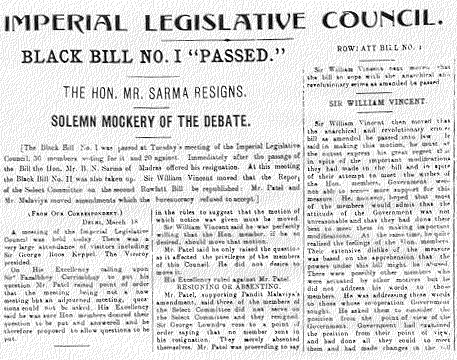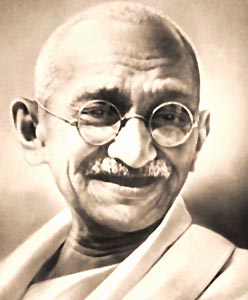Amritsar Tregedy ,1919
The immediate reaction of the authorities against hartal was to prohibit one of the leader, Satyapal, froms peaking in public. This did not frighten the citizens and on March 30, a hartal was observed and a meeting was held in Jallianwala Bagh (Amritsar). On April 4th, another leader, Dr. Saifuddin Kitchlew, was restrained. on April 6th, complete hartal was observed but peace was maintained. the Deputy Commissioner immidiately asked for additional military force. On April 9, there was Hindu festival and large processions of Hindus, Muslims and Sikhs streamed through the streets.
Gandhijee who at the invitation of the leaders was travelling to the Punjab was stopped at Palwal and prohibited from engring the province.
On the next morning i.e. April 10, Dr. Saifuddin Kitchlew and Satyapal were deported from Amritsar to an unknown place. This act of deportion touched off a new wave of injury to popular sentiment. A huge prrocession of 20,000 to 30,000 was peacefully taken out at Jallianwala Bagh in the afternoon of April 13th to protest against the areest of the leaders. They were peacefully listening to the speeches of the leaders when Genral Dyer and his men appeared at the main gate. General Dyer immediately deployed his troops and without any warning, opened fire and continued firing till the ammunation ran short. The casualities were officially estimated at 379 killed and over 1,200 wounded.
In Gujranwala, Gujrat, Lahore, Kasur and Multan on April 13th, the mobs excited by news from Amritsar committed arson and plunder. The authorities proclaimed martial law all over the Punjab. The horrors of Lahore and Amritsar were repeated and thousands of people in cities and villages were killed. Jinnah was shocked beyond measure at the suffering of Muslims in Punjab under martial law.
The immediate reaction of the authorities against hartal was to prohibit one of the leader, Satyapal, froms peaking in public. This did not frighten the citizens and on March 30, a hartal was observed and a meeting was held in Jallianwala Bagh (Amritsar). On April 4th, another leader, Dr. Saifuddin Kitchlew, was restrained. on April 6th, complete hartal was observed but peace was maintained. the Deputy Commissioner immidiately asked for additional military force. On April 9, there was Hindu festival and large processions of Hindus, Muslims and Sikhs streamed through the streets.
Gandhijee who at the invitation of the leaders was travelling to the Punjab was stopped at Palwal and prohibited from engring the province.
On the next morning i.e. April 10, Dr. Saifuddin Kitchlew and Satyapal were deported from Amritsar to an unknown place. This act of deportion touched off a new wave of injury to popular sentiment. A huge prrocession of 20,000 to 30,000 was peacefully taken out at Jallianwala Bagh in the afternoon of April 13th to protest against the areest of the leaders. They were peacefully listening to the speeches of the leaders when Genral Dyer and his men appeared at the main gate. General Dyer immediately deployed his troops and without any warning, opened fire and continued firing till the ammunation ran short. The casualities were officially estimated at 379 killed and over 1,200 wounded.
In Gujranwala, Gujrat, Lahore, Kasur and Multan on April 13th, the mobs excited by news from Amritsar committed arson and plunder. The authorities proclaimed martial law all over the Punjab. The horrors of Lahore and Amritsar were repeated and thousands of people in cities and villages were killed. Jinnah was shocked beyond measure at the suffering of Muslims in Punjab under martial law.










